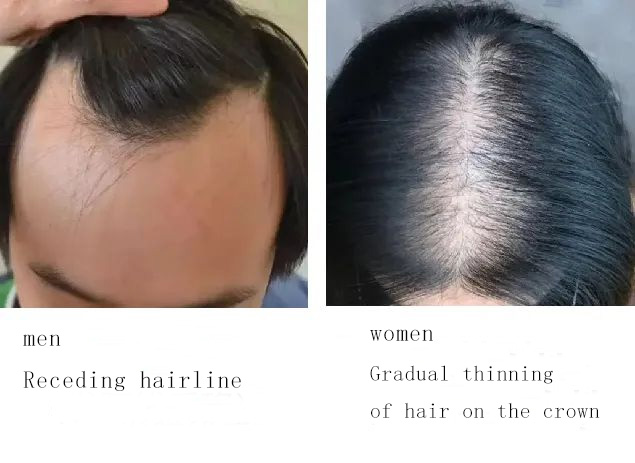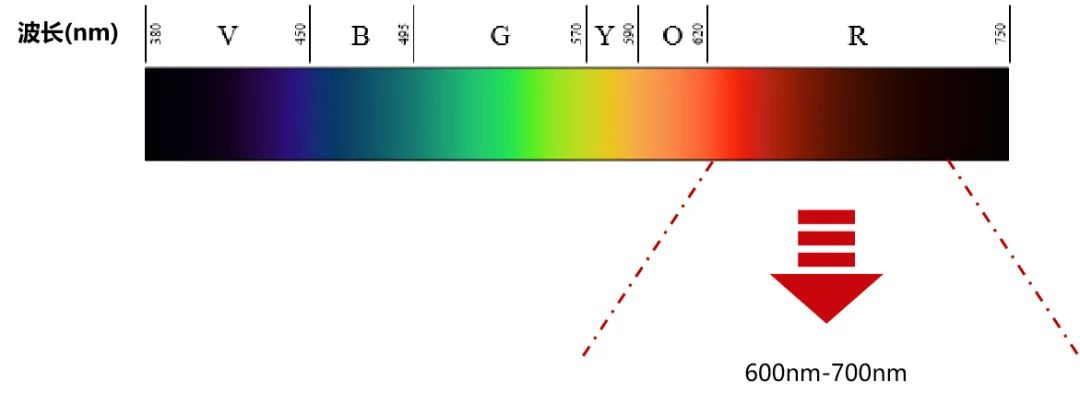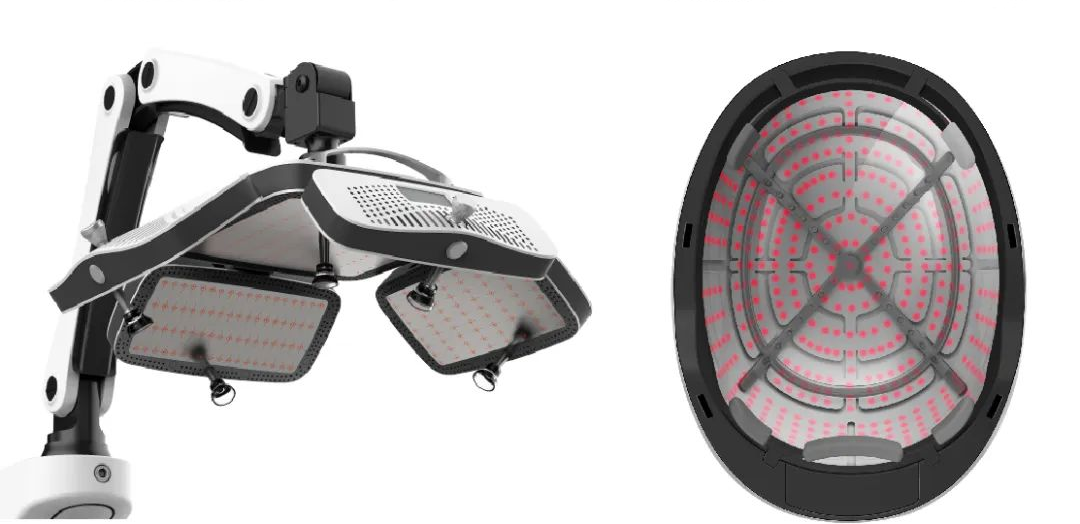20% of us are bearing hair loss, so how we protect our hair?
What is hair loss?
Hair loss is a common dermatological condition. With the faster pace of life, hair loss
has become a significant problem for modern individuals. Under normal circumstances,
the average daily physiological hair loss is about 80 to 100 strands. If the number exceeds
this range, it may be pathological hair loss. Among them, androgenetic alopecia (AGA),
previously known as seborrheic alopecia, is the most common type of hair loss in males.
It is characterized by gradual hair loss on the top and temporal regions of the head, leading
to a progressive decrease in hair density.
How to determine if it's hair loss? - Hair Pull Test:
Here's a small test to determine whether it's hair loss or normal shedding:
Grasp a small bunch of hair, about 40-60 strands, from the roots with your thumb, index finger,
and middle finger, and gently pull along the hair.
If only 1-2 strands of hair fall out, there's no need to worry.
If more than 3 strands fall out, be cautious about hair loss. If you lose more than 5 strands at once,
it indicates a severe hair loss problem and a risk of baldness. Additionally, performing the hair pull
test immediately after washing your hair may not provide accurate results. It's best to wait for a day
after washing.
As a multi-gene hereditary disease that depends on androgens, AGA has a complex pathogenic
mechanism that is not yet fully understood and significantly affects the quality of life for patients.
In recent years, a series of new methods for treating AGA have been reported. Let's take a look together!
How to treat androgenetic alopecia?
Conventional treatment options for androgenetic alopecia include:

I. Medication:
Hair growth medications: Minoxidil
Hormonal adjustments: Finasteride (males) / Spironolactone (females) / Progestogens (females)
II. Non-pharmacological treatment:
Physical therapy: Low-level laser therapy (LLLT)
Low-level laser therapy, also known as cold laser or low-intensity laser, primarily utilizes the
photobiological effect to exert a biological regulatory effect on the body.
Laser Hair Growth Device Wavelength:
Red light at 650nm, 655nm, and 670nm, all FDA-certified as safe and effective wavelengths for
treating androgenetic alopecia, with no statistically significant differences in efficacy.

Infrared light at 830nm can generate photothermal effects, promoting blood circulation and pore dilation.
When combined with red light and topical medications, it enhances drug absorption.
III. Mechanisms of hair growth promotion:
Acting on hair follicles, it produces ROS (reactive oxygen species), activates hair follicle stem cells, and
promotes the activation and proliferation of hair papilla cells.
Promotes the release of NO (nitric oxide) in mitochondria and Hb (hemoglobin), increases ATP production,
and converts cellular transcription factors.
Increases melanin production in hair follicles, transforming gray/white hair into black.
Regulates 5α-reductase activity, reducing the effect of dihydrotestosterone on hair follicles.
Reduces inflammatory factors, regulates local immune response, and decreases hair follicle fibrosis.
Properties of light sources:
Advantages of lasers over LED lights:
Lasers propagate vertically, with a smaller divergence angle, resulting in less energy loss and more
energy received by the scalp.
LEDs propagate non-vertically, with a larger divergence angle, resulting in greater energy loss and
less energy received by the scalp.
Number of light sources:
Lasers are densely packed, providing more uniform illumination and a more balanced distribution of energy.
Pulse mode:
For different hair loss conditions, pulse mode can be activated. Continuous mode delivers energy continuously
and gently, allowing energy accumulation and longer duration of photobiological effects, with a wider diffusion
range. It is more suitable for mild to moderate hair loss. Pulse mode releases energy instantaneously with
greater penetration depth, providing a stronger instantaneous stimulation to the hair follicles, and is suitable
for severe hair loss.
What should individuals with hair loss pay attention to in their
daily lives?
In daily life, it is important to pay attention to the following points:
1.Hair washing and hair care are crucial. Avoid washing your hair too frequently; aim for washing it every
2-3 days. Minimize hair perming and dyeing.
2.Regarding sleep, ensure a minimum of 7 hours of sleep per day, and try to sleep before 11 p.m. to avoid
staying up late. Sufficient sleep time and quality are beneficial for normal hair growth and metabolism.
3.Maintain a well-rounded diet, with an adequate intake of protein and micronutrients to ensure basic
nutritionfor hair growth. Consume fresh fruits and vegetables daily to meet the body's essential vitamin
requirements.
4.Limit the consumption of greasy and high-sugar foods, and incorporate more dried fruits, which contain a
higher amount of copper ions.
5.Maintain psychological well-being, relax your mindset, and avoid prolonged mental stress and anxiety.
6.Excessive worry and anxiety can contribute to hair loss, and the deeper the suppression, the faster the rateof
hair loss.Engage in moderate aerobic exercise to alleviate mental pressure, such as brisk walking and deep breathing.
Maintain an appropriate level of physical activity.

